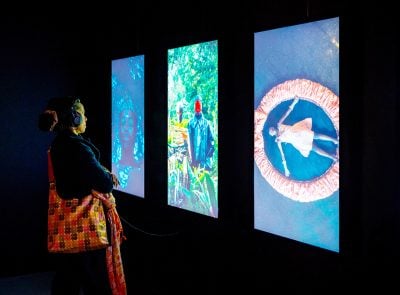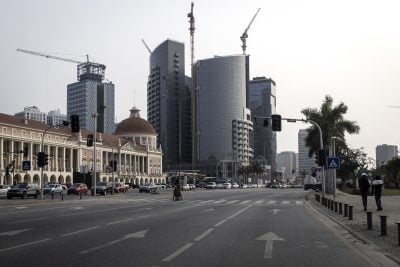Africa, it could be argued, is one of the world’s last regions to meaningfully develop. For many, independence brought with it the mammoth task of restructuring economies fit only for raw material exports amid periods of authoritarian rule and conflict. Progress has been piecemeal at best and African countries remain at the lowest end of global GDP per capita rankings.
That said, Africa is growing and a recent wave of economic and political liberalisations has underpinned renewed investor interest on the continent. Well-defined strategy and vision, then, will mark the difference between transforming the momentum into real gains as opposed to cosmetic league-table growth. As the economists, politicians and theorists flog their development wares based on previously successful models, Africa comes to the bazaar wondering which one to pick.
Industrialise, industrialise, industrialise
Heavy public investment in infrastructure and industry is currently a key priority for most governments on the continent. African sovereigns are briskly unlocking capital to suit these ends, for example through the sale of eurobonds, with much of the proceeds tied to infrastructure projects.
This industrialisation drive becomes even more obvious when scrutinising countries’ budget allocations. Nigeria, for example, has this year allocated more funds to power, works and housing than the total combined for health, education and the interior. Kenya’s allocation to energy, infrastructure and ICT last year dwarfed health, national security and environment protection.
This push is inspired by Europe and North America’s leap to greater prosperity through the first wave of industrialisation; but perhaps more significantly, it is also shaped by the recent examples of Asian countries rapidly lifting millions out of poverty through light manufacturing and heavy industrialisation. Indeed, the parallels between Africa and these Asian countries in the 1960s make for sobering reading. At the time of its independence in 1957 Ghana had almost the same GDP per capita as South Korea, at around $490, but by 1990 South Korea’s per capita income was 10 times greater than Ghana’s. Given the base similarities many African countries are now looking to emulate their Asian counterparts.
Lessons from South Korea
One of the continent’s most explicit endorsements of the South Korean model was the African Development Bank’s (AfDB) recent annual meeting held in Busan, South Korea’s economic capital. The intention was clear: to learn from what is now the world’s 11th largest economy.
AfDB president Akinwumi Adesina argued that the country’s remarkable development was down to industrialisation pure and simple. “Korea built heavy industries; invested massively in infrastructure including ports and rail in the 1980s and then through deliberate policies shifted to light industries and by the early 1990s it had moved into high value industry,” he explained. “Africa must learn from Korea.”
The evidence is indeed compelling. Under the direction of strongman Park Chung-hee the South Korean state began aggressively transforming the economy towards export-orientated businesses. Against the advice of the World Bank and the US – key donors in the country’s post war reconstruction – Park championed large conglomerates known as chaebols instead of small to medium enterprises. Concessions and rewards were offered to conglomerates like Hyundai, which soon started mass-producing cars as well as moving into shipbuilding, cement, chemicals and electronics. By selling a wide variety of products to the world South Korea was able to generate enormous amounts of wealth as well as provide thousands of jobs for unskilled labourers. The country then reinvested its profits in policies aimed at moving its products up the value chain to become high-value goods, ultimately pushing thousands into middle-income status. Global brands like Hyundai, along with LG and Samsung, are direct products of these policies.
As all the major Asian economies move towards high-value goods and services many argue Africa is presented with a golden opportunity to become the next light-manufacturing hub. Ethiopia – a prime example – has successfully replicated the model by using industrial parks to create commercially viable export-orientated textile industries. Ethiopia was the world’s fastest growing economy in 2017. Elsewhere industrial parks are being rolled out across Africa with mixed successes.
The future economy
While Ethiopia’s success is enviable, the growth reflected in GDP is not necessarily reflective of per capita gains and may be better linked to hugely successful public-led companies like Ethiopia Airlines and Ethio Telecom than any export-orientated industry. Moreover African governments, including Ethiopia, must ask themselves if exporting lightly manufactured goods is viable in today’s global economy, where the market is vastly different from that which faced South Korea in the late 20th century.
Speaking at the AfDB conference Jim Yong Kim, president of the World Bank Group, argued that Africa’s desire to replicate the South Korea model is based on a number of assumptions that may not necessarily hold true. The assumption is that big businesses will come to Africa in search of cheap labour to manufacture goods now that the Asian market has moved onto higher-end goods. Yet with the advent of technology and more specifically robots the idea that human hands are needed in light manufacturing is being called into question. Asia may in fact use technology to remain a light-manufacturing hub and Africa will then be unable to compete.
“What we are seeing is a dramatic re-shoring of industry,” said Kim in his opening address. In this context the World Bank President queried the viability of Africa adopting the model. “Is the path that Korea took available to African countries? So much evidence says it’s not, so much evidence suggests that technology will fundamentally change the paths to economic development that are available.”
Invest in people, not things
Kim, a South Korean citizen, pushed back on the idea that South Korea’s development was achieved solely through industrialisation and suggests that investing in education and healthcare – in people – was the most important element. Kim argued that instead of investing heavily in industry and infrastructure to try and create globally competitive goods Africa should invest in its people, who then have the capacity to adapt to the idiosyncrasies of today’s market.
“African countries say we’ll go rich first by becoming industrialised and then we will focus on our people,” he said. “That’s exactly the opposite of South Korea. They took the strategy of saying we don’t know what the economy of the future will look like so we will invest in our people.”
Boosting infrastructure and industry is fine, he said, but it should be left to the private sector so that the huge disparities in African government’s budgets between education and healthcare and infrastructure and industry are reversed. Indeed, according to a study by the World Bank “the connection between better education and healthcare and economic growth is far stronger than we had imagined,” he said.
Interestingly, South Korea has a minister for the future economy, based on the understanding that what was once commercially viable and globally competitive may no longer hold in the future. By investing heavily in human capital Kim argues that African governments will secure competitive advantage no matter what the future economy looks like.
Tom Collins
Want to continue reading? Subscribe today.
You've read all your free articles for this month! Subscribe now to enjoy full access to our content.
Digital Monthly
£8.00 / month
Receive full unlimited access to our articles, opinions, podcasts and more.
Digital Yearly
£70.00 / year
Our best value offer - save £26 and gain access to all of our digital content for an entire year!
 Sign in with Google
Sign in with Google 


